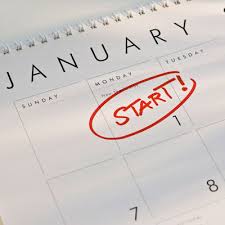 Happy New Year, everyone!
Happy New Year, everyone!
Every year on this day, a large number of people make at least one “resolution” for the upcoming year. To be precise, 45% of Americans usually engage in this annual ritual and only 8% of them are successful in achieving what they set out to accomplish, according to statisticbrain.com. Of course, the most often made resolution is weight loss and I will be setting that goal once again in 2015.
While many of us set personal resolutions, some of us do the same thing for the non-profit organizations at which we work. At least when I was a young executive director, I used to engage in this exercise. The following are just a few examples of professional resolutions I once made:
- Raise more money in the upcoming year
- Support the board and its committees better
- Be a better supervisor to my direct reports
Looking back, I want to believe that I was more successful with my professional resolutions than I was my personal ones. However, if I were being honest, I’d probably have to admit that I’m not sure how much better than 8% I actually was.
All of this New Years Eve stuff got me wondering what you (and I) could do differently in 2015 to achieve a different result?
As I pondered this question (all day today on a flight back to Chicago from a wedding near Philadelphia), I decided to turn to my old executive coaching textbooks for a few hints. Of course, in less than a few minutes I found the obvious answer.
Many of us vision cast and set goals without honestly identifying obstacles
When identifying obstacles — both internal and external — you can develop strategies and tactics that adjust for these hurdles, which ultimately improve the likelihood of success.
One of the executive coaching textbooks I consistently go back and re-read is “Coaching Questions: A Coach’s Guide to Powerful Asking Skills” by Tony Stoltzfus. If you supervise or coach anyone, I highly recommend this for your bookcase. To demonstrate the power of thoughtful questions, I will share just a few from Stoltzfus’ book to help you identify your internal and external obstacles to assist with your personal or professional New Years Resolutions for 2015.
External Obstacles
- What is stopping you from achieving your goal right now?
- What do you need to successfully achieve your resolution that you don’t currently have?
- What makes this hard to get done?
Internal Obstacles
- What is that critical voice inside your head — either your inner sabateur or your inner cheerleader — saying about situation?
- What are you feeling (e.g. emotion) when you think about trying to tackle this goal?
- What is the worst-case scenario when you think about embarking on this journey? What’s the fear behind that?
Are you scoffing at these questions? Before you wrinkle your nose too much, think about the last strategic planning process your non-profit organization. Didn’t you engage in a SWOT analysis prior to developing a vision statement and goals?
Maybe this isn’t so far fetched, huh?
OK . . . My New Years wish for you as we head into 2015 is that after you engage in setting a personal or professional goal, take a moment to ask a few tough questions. Use the information to help you determine how you plan on being one of the 8% who successfully achieve their resolutions.
Good luck, and . . .
Here’s to your health!
Erik Anderson
Founder & President, The Healthy Non-Profit LLC
www.thehealthynonprofit.com
erik@thehealthynonprofit.com
http://twitter.com/#!/eanderson847
http://www.facebook.com/eanderson847
http://www.linkedin.com/in/erikanderson847

One comment